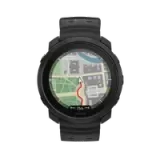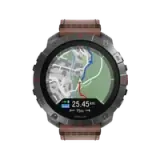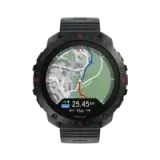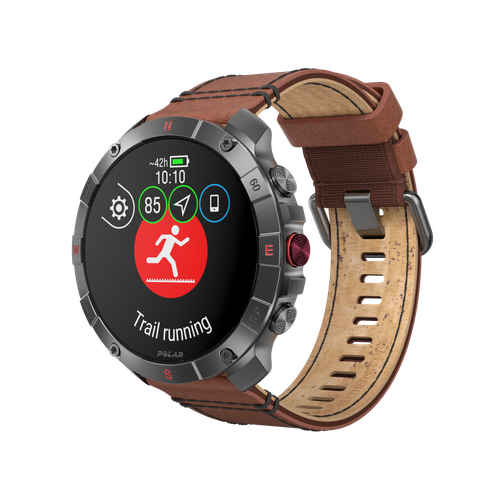When I started running, I never thought I’d run a marathon. When I did, I never thought I’d break 3:30. When that happened, qualifying for Boston still felt impossible. And when I finally made it to Boston… well, you can probably see where this is going.
For someone who didn’t have an active lifestyle until well past his 30s, the idea of seriously chasing a sub-3-hour marathon seems downright ridiculous. But here I am. In my mid-forties, I’m aiming to break 3 hours—at the Boston Marathon, of all places.
For the last six or seven years, a mix of consistent training, a great coach, sheer stubbornness, and a social life so minimal it should probably concern me has somehow turned me into a runner who can hold paces I once thought were pure fantasy. Year after year, the steady improvement in my times has felt logical—a natural outcome of the body adapting, muscles strengthening, and endurance building with each training cycle.
Not enough. After each race I’ve always craved a bigger challenge, something that would force me to question whether I’ve truly reached my limit. After clocking a marathon PR of 3:02:58 and earning my spot at Boston, the next goal practically wrote itself—break 3 or go down trying! What can go wrong?
Breaking 3: Wild goose chase
Chasing a personal best in Boston is often called a fool’s errand. The course, with its rolling hills, and the capricious New England spring conditions conspire against even the most meticulously planned race strategy. And yet, there’s something magnetic about this race. For amateur runners like me, the Boston Marathon is a once-in-a-lifetime opportunity to become part of the most storied running legacy—one woven together by champions and all the runners who have traveled the road to Boston. The race’s aura creates a pull stronger than reason itself, compelling you to train harder, push further, and dig deeper with the goal of unearthing a version of yourself you never knew existed.
Such dreams feel almost childish. But searching for the best version of myself has become the driving force behind why I keep running marathons. Even as I age, I keep wondering, what’s the limit?
Training for the Boston Marathon provides the perfect excuse to raise the stakes. Aiming for a sub-3-hour marathon seems like a fitting goal—a benchmark that carries a certain magic. Yet, chasing that time at this stage—well past forty—feels different. It feels audacious, maybe even foolish. The body doesn’t bounce back the way it once did. Recovery takes longer, speed work stings a little more, and the margin for error is razor-thin. But that’s exactly what makes the challenge irresistible.
That’s the paradox of the Boston Marathon—the blessing and the curse. I could choose to attempt my best marathon on a more forgiving course, one that’s flatter, faster, and less crowded. But that would feel almost like cheating, like sidestepping the real challenge.
That’s the paradox of the Boston Marathon—the blessing and the curse. I could choose to attempt my best marathon on a more forgiving course, one that’s flatter, faster, and less crowded. But that would feel almost like cheating, like sidestepping the real challenge. Boston isn’t just about speed; it’s about resilience. It provides the ultimate proving ground, the right stage, the motivation to push through another grueling training cycle while embracing even greater difficulty.
The stakes are high. And when the stakes are this high, the training cycle becomes as big a challenge as the race itself. I’m not just talking about the physical demands—it’s the mental battle that truly defines the journey.
Preparing for our biggest goal yet will push us in ways we’ve never experienced, and if we’re not careful, we risk overstepping our limits. The pressure to perform can drive us to make well-intentioned but risky adjustments—adding more mileage, ramping up intensity, and tackling extra hills, all in the name of getting stronger. But too much, too soon can backfire. Fatigue creeps in, recovery suffers, and the fine line between progress and injury becomes razor-thin. Injury becomes likely.
undefined

Polar Vantage V3
Premium Multisport Watch
An ensemble of biosensing instruments, AMOLED display, dual-frequency GPS, maps, and the most comprehensive suite of training and recovery tools on the market. The stage is set, and the Polar Vantage V3 smart sports watch is ready to put in the performance of a lifetime.
Enjoying this article? Subscribe to Polar Journal and get notified when a new Polar Journal issue is out.
Subscribe
Brain in full meltdown mode
The first thing to understand about training for the Boston Marathon is so obvious that it’s easy to overlook: Boston is still just a marathon—42.195 km (26.2 miles), like any other. That means your training cycle shouldn’t look drastically different just because it’s Boston.
The key isn’t to reinvent the wheel but to refine it. Trying to overhaul too many aspects of your training—mileage, intensity, hills—all at once can be counterproductive. Instead, focus on small, gradual adjustments. Consistency, not drastic change, is what leads to success on race day. Holding back as you plan your buildup is the first mental challenge.
But training for a big goal isn’t just about racking up miles—it’s as much a mental rollercoaster as it is a physical grind.
But training for a big goal isn’t just about racking up miles—it’s as much a mental rollercoaster as it is a physical grind. Sure, the training plan might look familiar on paper, but the moment we set an ambitious target, the stakes feel higher, the pressure heavier, and the mind a whole lot noisier. If we’re not careful, that pressure can do more harm than good, turning motivation into meltdown territory.
As I inch closer to toeing the line in Hopkinton, a few mental hurdles have been creeping in. And if you’ve ever chased a big goal, chances are you’ll know exactly what I mean.
Self-imposed pressure
With a big goal looming, every run in my training plan suddenly feels like it carries extra weight. Every workout becomes an unspoken test of whether I’m on track for success. And if I miss a target pace during an interval? It feels like the whole plan is coming off the rails.
Obviously, that’s not true. But the fear of falling short—of not doing the right things or living up to our own expectations—can sneak in and suck the joy right out of the process. The key is to channel that pressure into focus rather than fear—embracing it as motivation to train harder and stay disciplined. And to do that, we have to accept that failure is possible—and that’s okay.
Self-doubt: Impostor syndrome
“Do I really belong here?” “Do I have any business chasing this goal?” “Am I even capable of this?” Even after years of experience and measurable progress, I still catch myself thinking I’m not a good enough runner. My technique is far from perfect. I’m not strong enough. I’m just… average.
The Boston Marathon, with its rich history and deep field of fast runners, can amplify those feelings. In moments of doubt, I have to remind myself: no one gets into Boston by accident. I’ve earned my spot. The best way to combat impostor syndrome is to trust the work we’ve put in—one mile, one workout, one training cycle at a time.
No training cycle is perfect: Expect setbacks
In a perfect world, training would go exactly as planned. We’d hit every pace, complete every workout, and show up on race day in peak condition. But that’s not reality. There will be setbacks—missed runs, nagging injuries, tough workouts that don’t go as planned.
The key is not to let one bad day—or even a bad week—throw the whole journey off track. A single workout doesn’t define success; it’s the full body of work that matters—not just this training cycle, but everything that came before it. Because progress isn’t linear, and in the end, consistency wins.
The fear of injury is my biggest mental hurdle in marathon training—because what makes us stronger can also break us.
The fear of injury
The fear of injury is my biggest mental hurdle in marathon training—because what makes us stronger can also break us. Pushing our limits is what drives breakthroughs, but if we’re not careful, it can just as easily push us too far, leading to burnout or injury.
Sometimes, that fear can be paralyzing, making us hyper-aware of every ache and twinge—imagining phantom injuries that aren’t even there. It can even lead to bad habits, like altering our form or moving awkwardly, as if our bodies are made of glass. More than once I’ve had to tell myself to run naturally, just as I always have.
Just as importantly, we need to learn when to push forward and when to pull back—training smart, not letting ego dictate our pace, and resisting the urge to always go harder and faster.
More mileage, more intensity, more effort—at a certain point, it all becomes a delicate balancing act. The key is learning to listen to our bodies, recognizing the difference between necessary discomfort and harmful strain. This not only keeps us strong through race day but also helps keep phantom injuries and the fear of real injury in check.
And always… shoot your shot
For me, training for huge goal such as a sub-3 hour marathon in Boston is just as much about mental resilience as it is about physical endurance. In fact, the running part—the endless miles, the lung-burning workouts, the quad-crushing long runs—is the easy part. What’s much harder? Keeping my brain from spiraling into full-blown panic mode. Because when you set a big goal, it’s not just about putting in the work—it’s about managing the emotional rollercoaster that comes with it.
But in the end, that’s what makes it worth it. It’s okay to set ridiculous goals. It’s okay to put ourselves on the line, risk failure, and chase something that feels slightly unhinged. Goals like this push us to see what we’re made of, and give us a reason to keep going.
And when we’ve done the work, we’ve earned the right to take this shot.
 Polar Vantage M3
Polar Vantage M3
 Polar Grit X2 Pro Titan
Polar Grit X2 Pro Titan
 Polar Grit X2 Pro
Polar Grit X2 Pro
 Polar Grit X2
New
Polar Grit X2
New
 Polar Vantage V3
Polar Vantage V3
 Polar Ignite 3
Polar Ignite 3
 Polar Pacer Pro
Polar Pacer Pro
 Polar Pacer
Polar Pacer
 Polar Unite
Grit X Series
Vantage Series
Pacer Series
Ignite Series
Polar Unite
Grit X Series
Vantage Series
Pacer Series
Ignite Series


































